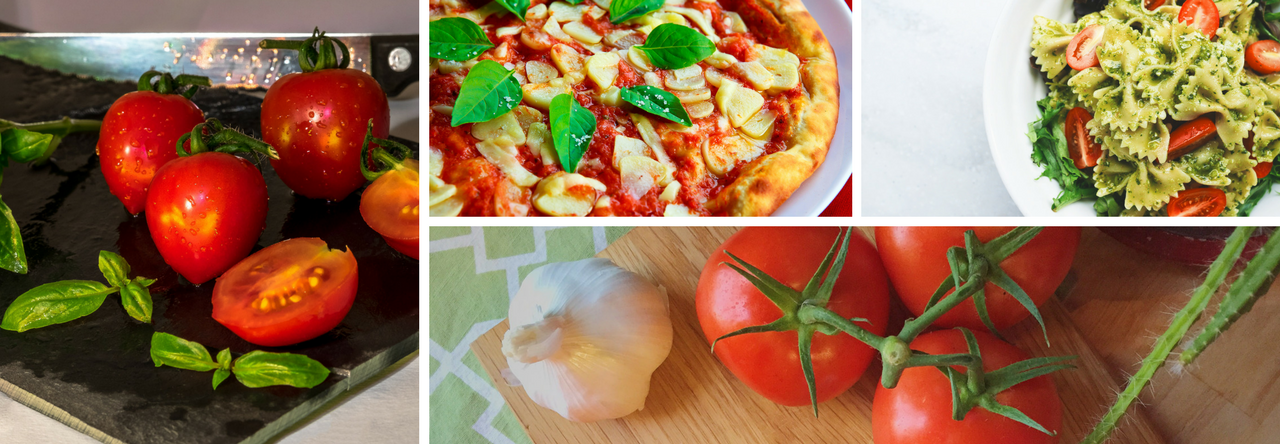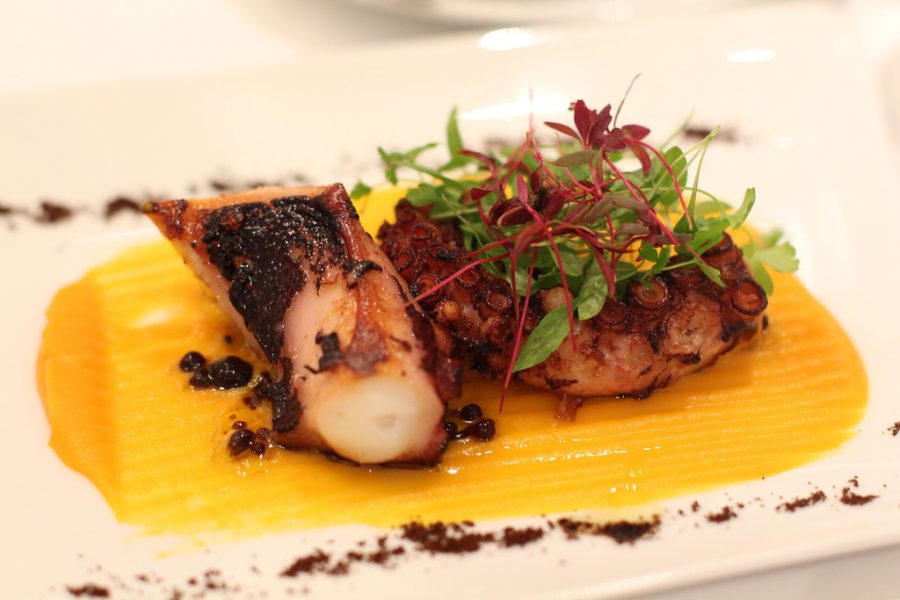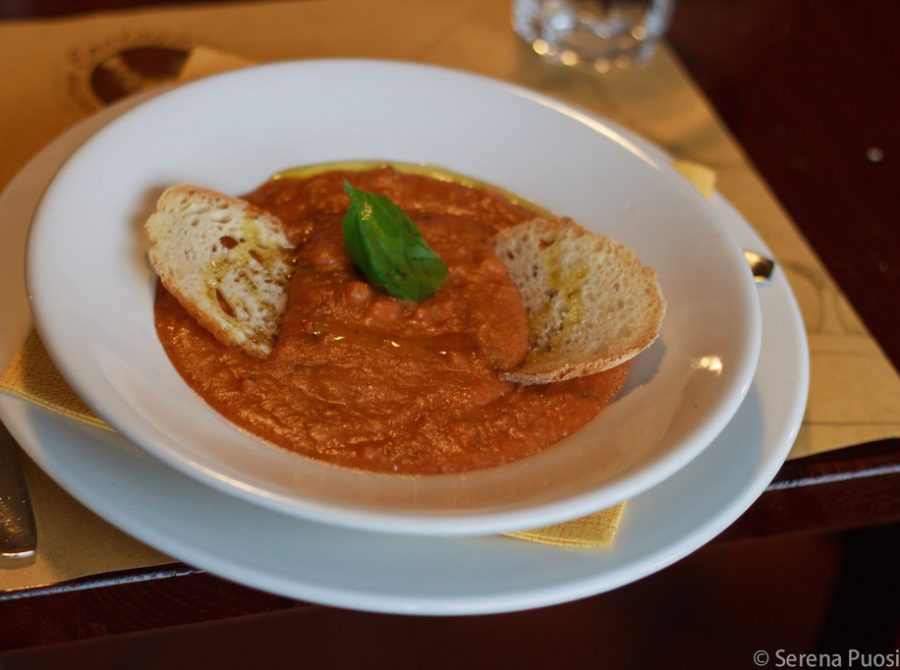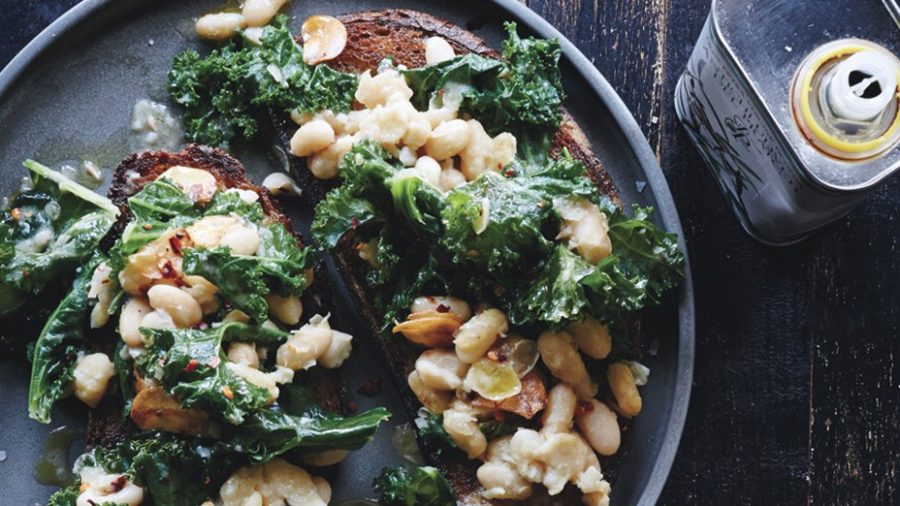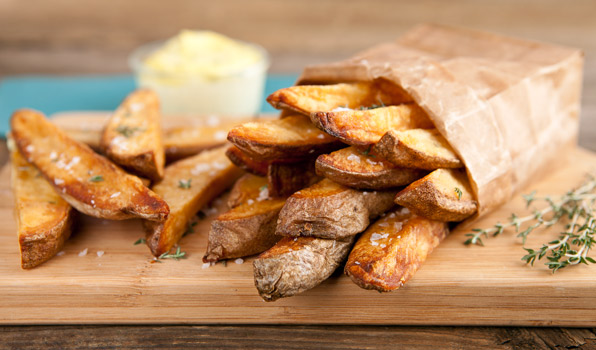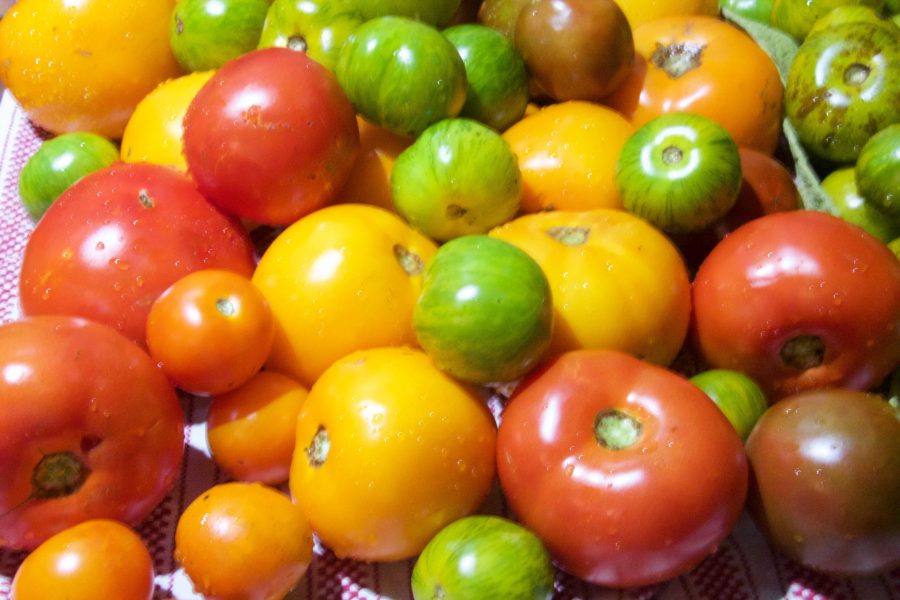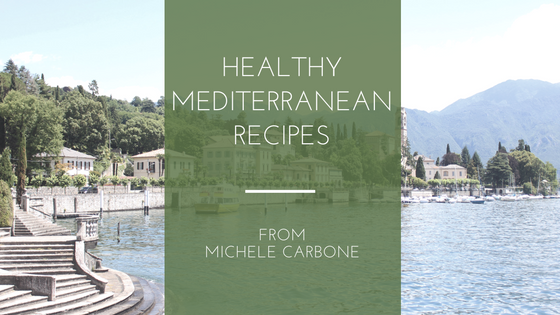Bucatini alla Amatriciana, Rossa (red)
Classic Roman recipe with too many variations. It’s very easy to make, yet it’s difficult to find an excellent preparation in most restaurants. Try my recipe – most of my friends love it. It’s my youngest daughter’s favorite pasta recipe. As always, the quality of the ingredients is key. You may need to go to a specialty grocer (such as Whole Foods) in order to find the guanciale or pancetta this recipe calls for. You also need to get imported Italian Pecorino cheese, preferably in a small block that you can grate yourself.
This recipe relies on you cooking the Bucatini in boiling water for about 1-2 minutes less than the suggested cooking time specified on the box. The reason for this is that you drain the almost-cooked Bucatini, then add it with the other ingredients and cook it on high heat for a couple more minutes. This allows the flavors from the sauce to absorb into the pasta noodle, creating a more flavorful pasta.
Note: If you cannot find either guanciale or pancetta, you can use thick-cut bacon, but the flavor will not be as good.
Bucatini alla Amatriciana, Rossa (red)
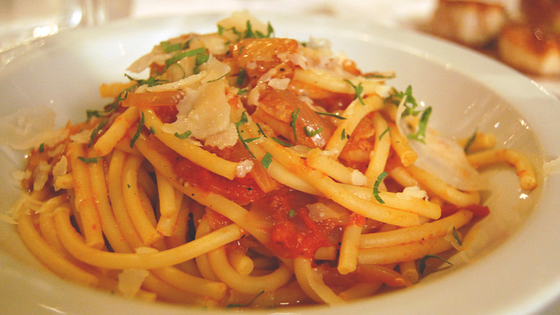
Ingredients
- 1 box of Bucatini, Spaghetti, or Rigatoni style pasta (500 grams)
- 100 grams (4 oz) Pecorino Romano cheese, freshly grated
- 125 grams (5 oz) of “guanciale” or if you cannot find it, “pancetta,” cut in thick slices of about (about ¼ of an inch thick by ¼ inch wide and ¼ long)
- 1 TB extra virgin olive oil
- Red pepper flakes, or 2 fresh little hot peppers chopped very finely (put as little or as much red pepper as you like)
- ¼ glass white wine
- 400 grams of canned Italian tomatoes (home made, or can tomatoes, Pomi or similar) –for this recipe canned tomatoes are better than fresh tomatoes.
Preparation
- Put a large pot of water to boil on the stove – it should be boiling by the time you get to step 4
- In an 8-inch skillet, add the guanciale (or pancetta), red pepper, and 1 spoon of olive oil.
- Start the heat at medium high and as soon as “sfricchiola” (means you hear it is frying), to low the heat for about 5-6 minutes to let the fat get out, then add white wine and turn the fire up for 30 seconds so it evaporates.
- Add the tomatoes to the pan and cook on medium or medium/high (depends how powerful your stove is, should be just bubbling slowly, not boiling). Cook this sauce for about 10 minutes
- In the meantime poor the pasta into the boiling water. As soon as the water starts to boil again after the pasta has been added, use a long-handled wooden spoon to stir the pasta so that nothing sticks to the bottom.
- Drain the pasta very al dente, poor in a past bowl, add the tomato/guanciale sauce, mix well and add the pecorino mixing well all the time and serve immediately.
- Buon appetito!
Italiano: Bucatini/Rigatoni Amatriciana
Ingredienti
- 1 pacco di bucatini o rigatoni
- 100 g di pecorino romano grattugiato fresco
- 125 g di “guanciale” o “pancetta”, tagliato a fette spesse di circa (circa ¼ di pollice di spessore per ¼ di pollice di larghezza e ¼ di lunghezza)
- 1 cucchiaio di olio extravergine di oliva
- Peperoncino rosso picante a piacere –io metto 2-3 peperoncini rossi calabresi
- 1 sorso (1/4 di bicchiere) vino bianco
- 400 grammi -1/2 scatola di pomodori pelati schiacciati, Pomì o simili
Preparazione
- Pancetta o guanciale a pezzettini, 1 cucchiaio d’olio, fuoco medio alto appena sfricchiola abbassa il fuoco e fai andare circa 5-6 minuti perche` rilasci il grasso –la pancetta non deve essere fritta! L’importante è fare cuocere il guanciale a fuoco vivo senza bruciarlo!!!
- Appena il guanciale comincia a essere un po’ croccante, aggiungete un sorso di vino binco, fate evaporare 1 minuto.
- Aggiungere 400 g pelati a pezzetti, alzare il fuoco a medio/medio alto, deve sobbollire, girare spesso.
- Allo stesso tempo calare la pasta, scolarla molto al dente, versatela in una zuppiera aggiungere il sugo, mischiare bene 2 minuti mentre aggiungete Pecorino e servire.
- La fine del mondo!

